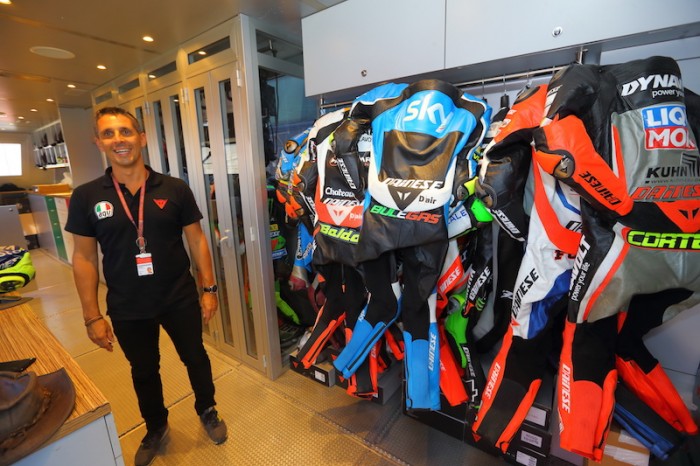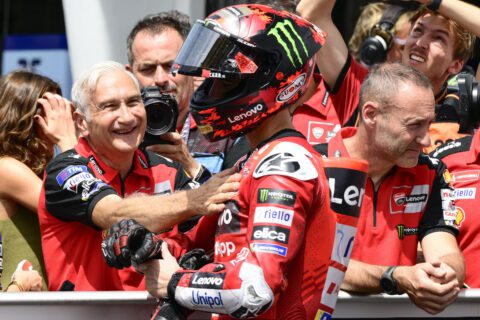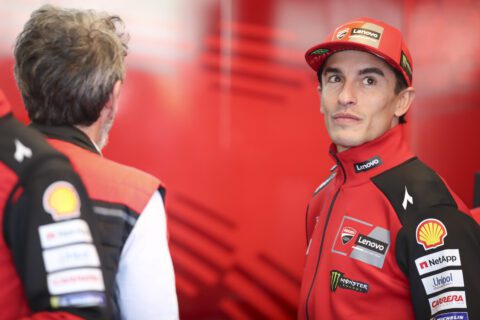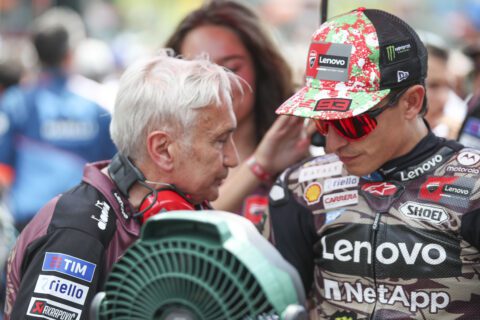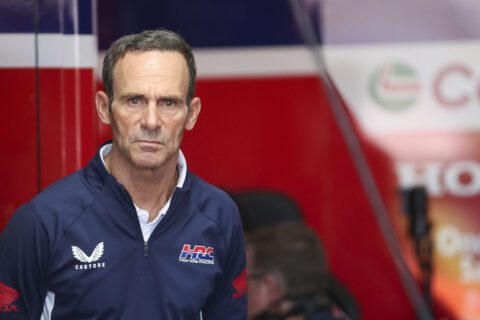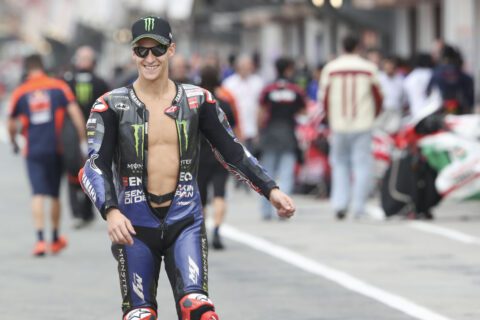Keeping your track riding kit in good order is a never-ending task. Cleaning the flies out of your helmet vents, getting the grime off those blinging white leathers, swapping knee and toesliders – it all takes time and effort. And if you skimp on it, your gear quickly starts to look pretty nasty.
Of course, the guys at the top of world racing have folk to do it for them. Folk like Stefano Corte, the man behind the D-Mobile, Dainese’s MotoGP kit workshop, that runs out the back of a slick HGV trailer. We met Stefano at the Misano MotoGP round the other week, and he showed us round.
The first thing that strikes you is how compact it all is. I had notions of banks of skillful ladies with sewing machines, ready to carry out repairs and mods – but I couldn’t have been more wrong. “We don’t make repairs at the track,” said Stefano. “We would have to carry too much different coloured leather and parts, for all the suits, it would be a waste. Also, many of the machines to repair the suits are very large and specialised – for bonding the external protectors and these things.” So the riders simply have spare suits, boots and gloves, to cater for crash damage at races.
What does go on in here then? Well, R&D is a big part of the operation, particularly with the new D-Air airbag systems that Dainese has been developing over the past decades. The aerodynamic hump in the suit contains all the electronics for the airbag control unit, and these are all continually storing data on how the rider moves, and what happens in a crash, measured using accelerometers and gyroscopes, plus an accurate GPS system. In between sessions, or after a crash, the suit comes here and the telemetry data is downloaded, expanding Dainese’s body of knowledge still further.
The airbag electronics have to do a very complex job. They have to ‘work out’ if you’re really having a crash, and if so, set off the gas canister to inflate the bag in microscopic fractions of a second. Part of that is simple – for example, the unit doesn’t activate unless you’re travelling over 50kph, so it won’t go off if you throw it into the back of a van, say. But much of it is real esoteric research and design, constantly honing the firing algorithm, and making the suit smarter and smarter, so it has the best possible chance of protecting you in a crash.
Behind Stefano’s data download station is a cabinet with a bank of hot-air dryers, designed to quickly get rid of sweat or rain water from the suits. He’s got about 16 riders to look after in the paddock: Valentino Rossi, Jack Miller, Andrea Iannone, Stefan Bradl and Pol Espargaro in MotoGP alone. Moto2 riders include Lorenzo Baldassari, Sandro Cortese, Franco Morbidelli and Luca Marini. Dainese also lost one of its rising stars when Luis Salom died at the Catalunya round this year. In Moto3, Dainese supports the Sky VR46 team, and also Francesco Bagnaia, and Niccolo Antonelli.
It’s a big investment for brand ‘D’. Each rider’s equipment can cost up to €60,000 according to Corte, and that includes suits, boots, gloves, as well as the AGV helmets, which are serviced at the other end of the D-Mobile truck. Dainese bought the Italian lid firm in 2007, making it the only company that can provide the whole ‘head-to-toe’ outfit for riders.
We let Stefano get back to work – he’s got a lot to do to get ready for the race weekend. He’s also got to prepare for the flyaway rounds coming up next too – and that’s an even harder job. The D-Mobile truck is only used in Europe – for the Asian, American and Australian rounds, Corte has to operate out of a much smaller shipping container that’s flown out with the rest of the MotoGP setup.
And that’s where the most important part of his job comes into play – logistics. It’s all about making sure Stefano has exactly what he needs to look after his riders – and no more. Having to suddenly fly a suit to Texas would be massively expensive – and might not even be possible in the time available. And shipping a left boot to Oz because you packed two rights just wouldn’t be possible. On the other hand, schlepping too many boots and suits round the world all year would be prohibitively expensive. It’s a fine balance – and a never-ending task for the Dainese folks…

